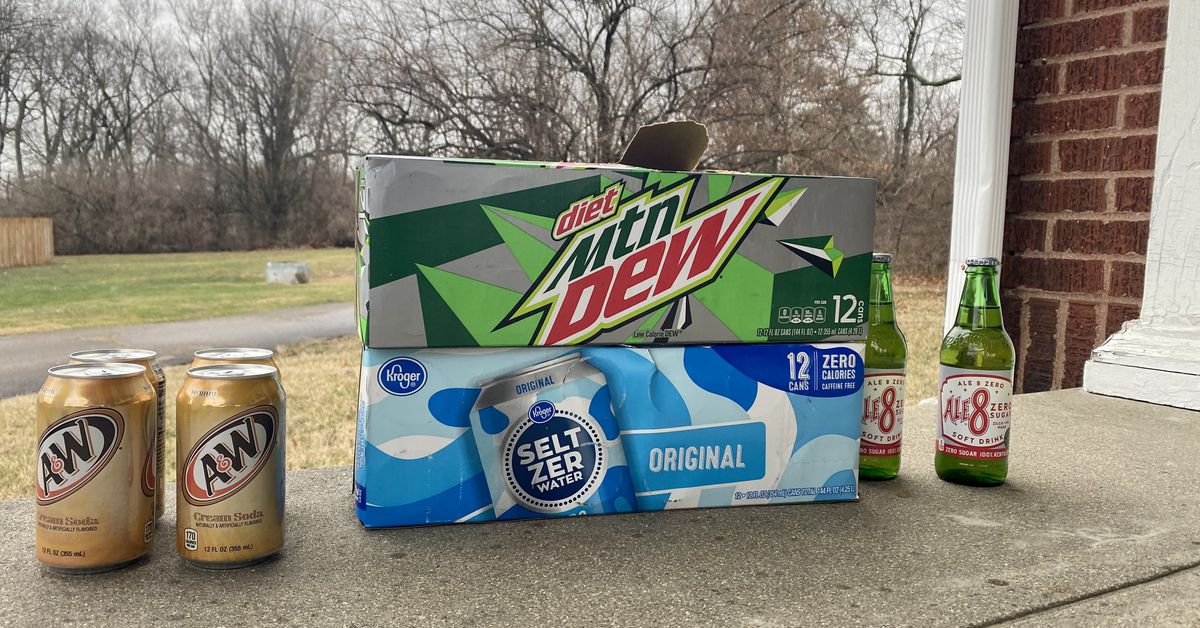
If micro-seasons like “blackberry winter” and “redbud winter” are favorite descriptors for farmers and old-fashioned readers of local environmental tea leaves, then porch pop season is a hyper-specific climate designation for a more modern, soda-loving, era.
Typically observed from mid-October through early February, porch pop season is the time of year when families across rural America — specifically Appalachia and the Midwest — migrate their canned sodas (and beer, on occasion) from their refrigerators to the outdoors, where atmospheric conditions take over the job of keeping the carbonated beverages cold. High-maintenance potted plants are brought indoors, clearing the way for chemically engineered refreshments to be expertly chilled by the elements. Over the course of these few, highly anticipated weeks, porches and decks are stacked, vending machine-style, with cases of Pepsi, and driveways are decorated with two-liters of Sprite that have been gently lowered from truck beds so as not to lose their fizz. Go ahead and fill ‘er up: It’s Mother Nature’s refrigerator, after all.
The quintessential porch pop is pulled from a small fleet of aluminum cans that have been spaced out to receive optimal, 365-degree chilling, and cracked immediately for an initial, frosty sip. Sodas housed in plastic aren’t as receptive to a natural chilling, so are best avoided, and while all concrete and wood outdoor spaces work well for holding porch pop, sticking it in the grass (or leaving it in the car) throws off the icy alchemy too much. There’s a sense of suspense that comes with each porch pop’s exact temperature configuration: It may have beads of ice floating inside, or be half-slushy, or simply fogged up to cool perfection. For porch pop people, the outdoor chilling simply makes the drink taste better when temperatures wobble within the targeted 32 to 38 degree mark overnight, striking a Venn diagram overlap of physical sensation and 300-plus days of annual anticipation.
But this year’s porch pop season has been far from perfect: tomatoes-‘til-November warmth lingered far too long to take any sodas outside during football season, and my Facebook timeline was filled with the bitter accounts of high-school classmates who had scuttled to the carport to retrieve their test-balloon Dr. Pepper only to find it warm as an infant’s bath water. Today, after a brief bite of subzero weather that prompted many people to call family members to remind them to bring their porch pop inside, I found my 12-pack of Diet Mountain Dew sitting 58 degrees and damp in the morning fog. “The weather ain’t cooperating this year for porch pop,” a passerby piped up as she watched me wrestle the box, its flimsy cardboard quickly deteriorating, under my arm. If anything has the potential to make our ongoing environmental catastrophe more urgent for my neighbors, it’s a too-warm porch pop season.
That’s because a frigid commune with nature is what makes up half the deliciousness of porch pop season. It’s a time of year for people who grew up thinking that having a second refrigerator in a suburban garage was the pinnacle of success but who, as adults, would never abandon the porch pop tradition for a humming vessel lined up with regimented cans. No, those who love porch pop season understand it’s something of a reverse hygge: instead of reaching toward comfort and ease during the colder months, the struggle of walking outside to retrieve a single can of Sunkist somehow makes the experience more meaningful and thus the soda more delicious.
But is it really the self-imposed suffering of porch pop season that makes the drink better? Or is it the brief fellowship with nature? I can’t say for certain, but it’s undeniable that soda tastes holy during porch pop season. If they recreated the Sistine Chapel down at my local gas station, I imagine they’d airbrush a porch pop in the anticipatory space between the finger of Adam and the finger of God, an emblem of where heaven and man can still join together for a fleeting sip of shared creation.
Sarah Baird is a Kentucky-based journalist and author whose work appears regularly in the New York Times, GQ, Saveur, the Believer and beyond. A 2019 Knight Visiting Nieman Fellow at Harvard University, she writes frequently about cultural issues impacting rural America.
